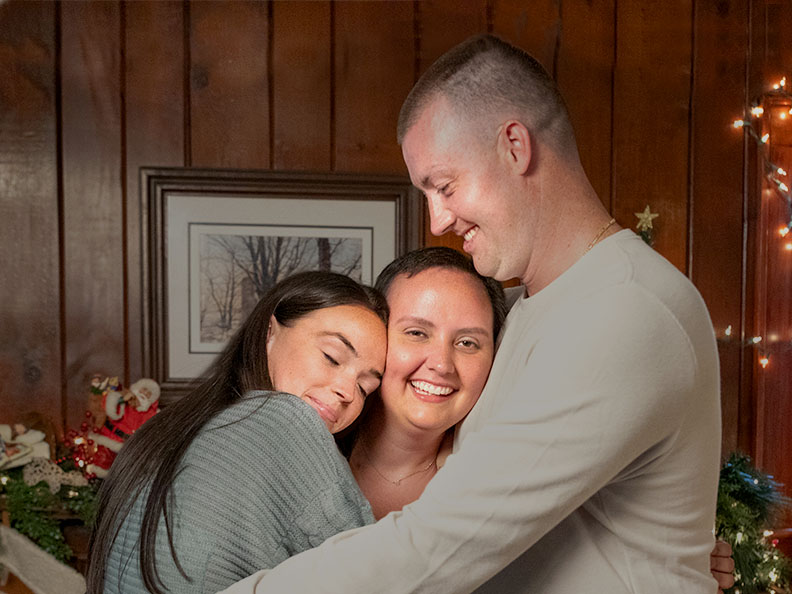Your gift is 100% tax deductible
Radiation Therapy for Testicular Cancer
Radiation therapy uses high-energy waves or particles to kill cancer cells. In treating testicular cancer, radiation is used mainly to kill cancer cells that have spread to lymph nodes.
How radiation therapy is done
Radiation therapy, in which a machine sends radiation to a specific part of the body, is known as external beam radiation. The treatment is much like getting an x-ray, but the radiation is stronger. Radiation doesn’t hurt. Before your treatments start, the medical team will take careful measurements to determine the correct angles for aiming the radiation beams and the proper dose of radiation. Each treatment lasts only a few minutes, but the set-up time—getting you into place for treatment—usually takes longer.
Radiation therapy for pure testicular seminoma cancer
Testicular cancer is classified into 2 subtypes:
- Pure seminoma
- Non-seminoma.
Radiation therapy is found to be effective for testicular seminoma cancer. Radiation therapy for stage I seminoma is now used less often. Surveillance or, less commonly, chemotherapy with carboplatin is usually used instead of radiation therapy for stage I seminoma at many treatment centers because radiation therapy may cause other cancers and heart disease. However, radiation therapy remains an option for stage I, IIA, and IIB pure seminoma after an orchiectomy (the operation to remove the testicle). In this case, radiation is directed at the lymph nodes at the back of the abdomen (the retroperitoneal lymph nodes) to destroy any cancer in those lymph nodes that can’t be seen. It can also be used to treat small amounts of seminoma that have spread to the nodes (based on changes seen on CT and PET scans).
Radiation therapy for testicular cancer metastasis
Testicular non-seminoma cancer generally does not respond to radiation therapy, so it is usually not given for this cancer subtype. However, in cases where the testicular cancer has spread to distant organs and is causing symptoms, radiation can be effective for both seminoma and non-seminoma testicular cancer. For example, it may be used to treat brain metastases from either seminoma or non-seminoma, though testicular cancer rarely spreads to the brain.
Types of external radiation therapy used for testicular cancer
Two advanced types of radiation therapy for testicular cancer are 3D conformal radiation therapy (3DCRT) and proton therapy. 3DCRT is the most preferred radiation treatment for testicular cancer. It delivers x-rays from multiple angles, shaping the beams to match the tumor’s exact size and shape. This approach helps target cancer cells effectively while minimizing radiation exposure to healthy tissues. Proton therapy is another option that offers great precision by using high-energy protons instead of x-rays. Both techniques reduce radiation exposure to nearby organs, lowering the risk of secondary cancers and long-term side effects.
Possible side effects of radiation therapy
Radiation therapy can affect nearby healthy tissue along with the cancer cells. To reduce the risk of side effects, doctors carefully figure out the exact dose you need and aim the beams to hit the tumor. The treatment of testicular cancer often uses lower radiation doses than those needed for other types of cancer.
Common side effects can include:
- Fatigue
- Nausea
- Diarrhea
Some men have skin changes such as redness, blistering, or peeling, but those are uncommon.
These side effects get better over time after radiation is finished. If radiation reaches the healthy testicle, it can affect fertility (sperm counts), so a special protective shield is placed over the remaining testicle to help protect it.
Radiation can also have some long-term effects, such as damage to blood vessels or other organs near the treated lymph nodes. It can also cause an increased risk of getting a second cancer (outside of the testicle) later in life. These risks were higher in the past when higher doses were used and more tissue was exposed to radiation.
More information about radiation therapy
To learn more about how radiation is used to treat cancer, see Radiation Therapy.
To learn about some of the side effects listed here and how to manage them, see Managing Cancer-related Side Effects.
- Written by
- References

Developed by the American Cancer Society medical and editorial content team with medical review and contribution by the American Society of Clinical Oncology (ASCO).
Chovanec M, Cheng L. Advances in diagnosis and treatment of testicular cancer. BMJ. 2022 Nov 28;379:e070499. doi: 10.1136/bmj-2022-070499. PMID: 36442868.
National Comprehensive Cancer network. NCCN Clinical Guidelines in Oncology (NCCN Guidelines). Testicular Cancer. Version 1.2025 – Jan 17, 2025. Accessed at https://www.nccn.org on Feb 18, 2025.
Last Revised: August 10, 2025
American Cancer Society medical information is copyrighted material. For reprint requests, please see our Content Usage Policy.
American Cancer Society Emails
Sign up to stay up-to-date with news, valuable information, and ways to get involved with the American Cancer Society.



